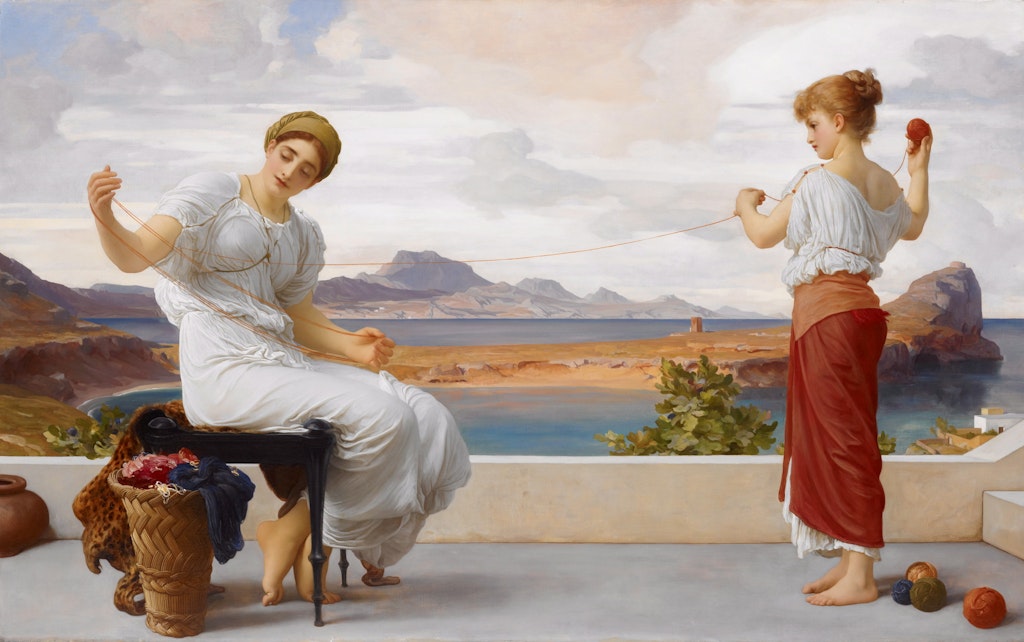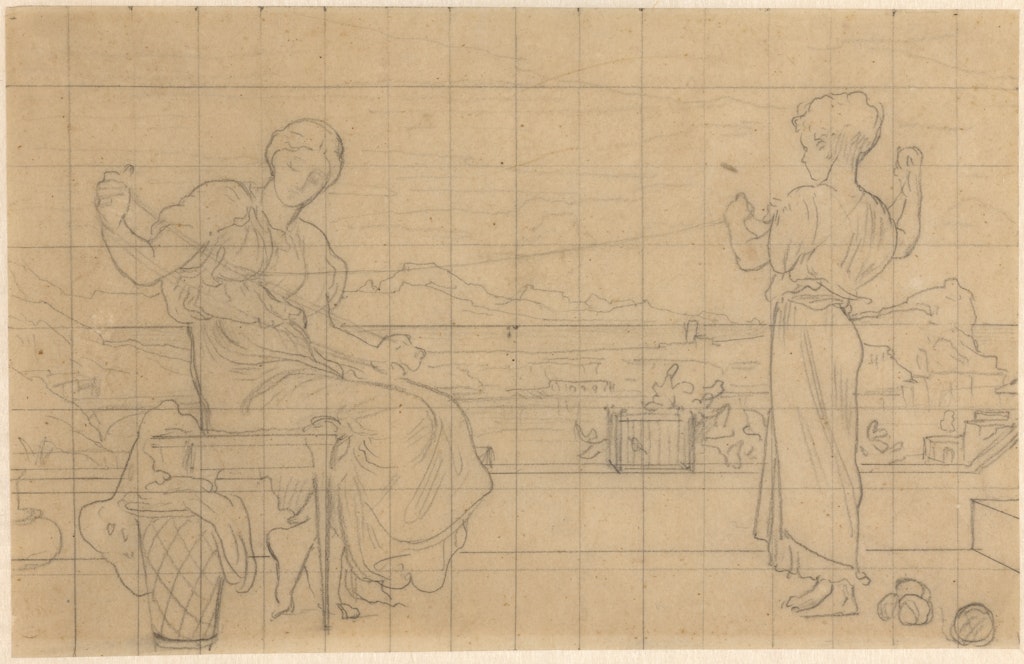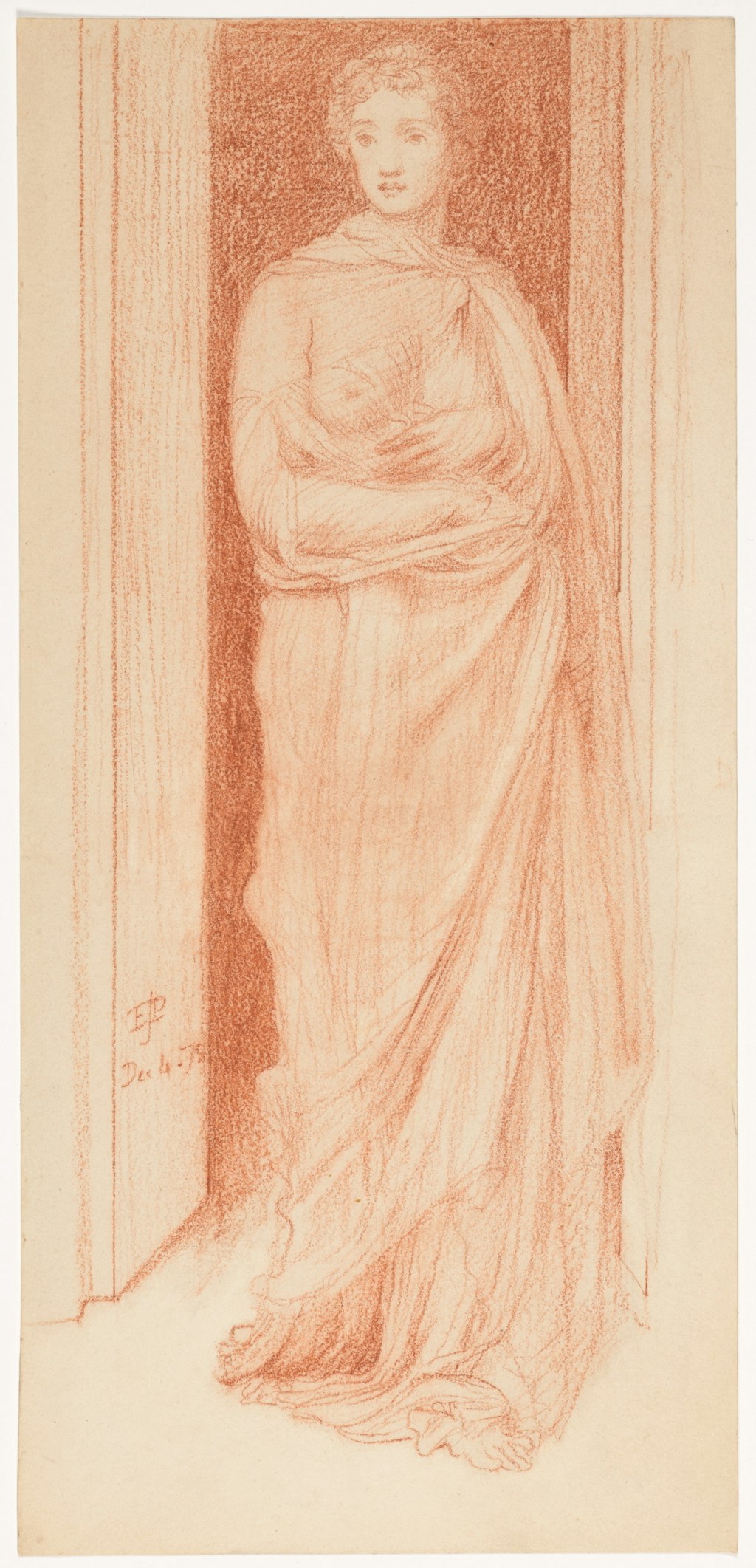Drawing to painting
The Art Gallery of New South Wales has acquired studies by Frederic Leighton and Edward Poynter that they drew in the process of creating major paintings, also in the collection.
Frederic Leighton and Edward Poynter were leading proponents of the classical revival style in late 19th-century British painting and pillars of the Victorian art establishment. Some of the greatest canvases they painted are in the Art Gallery of New South Wales collection and can be seen in the Grand Courts in the John Schaeffer Gallery, which houses one of the finest ensembles of late-Victorian painting in its original setting outside the UK.
Leighton and Poynter were academic painters of the highest order who based their working methods on those of the painters of the Italian renaissance. They laid great emphasis on drawing and regarded it as a distinctive activity fundamental to their practice as painters. In many ways they exalted drawing as the artist’s worthiest goal and the rival quality of colour, which had to be held in check by form.
Recently the Art Gallery acquired a number of studies related to major canvases in the collection by Leighton and Poynter that reflect their makers’ belief in the efficacy of drawing. These were not drawn as ends in themselves but as the means to an end: the finished work of art.

Frederic, Lord Leighton Winding the skein c1878, Art Gallery of New South Wales
The first of the two discussed here is Leighton’s study for Winding the skein, exhibited at the Royal Academy in 1878, the year he was elected its president. Leighton translates the domestic activity of winding balls of wool on the roof terrace of a whitewashed house into an idyllic vision of classical antiquity set against the bay of Lindos on the Greek island of Rhodes.
The drawing was done during the final stage in the evolution of the pictorial design. It is a small-scale, squared-up outline drawing produced to transfer the composition to the canvas, square by square. Leighton would already have made exhaustive preparatory studies of the nude as well as drapery studies (of which there are several choice examples in the collection) to establish the poses of the figures to be included in the composition. The drawing shows how Leighton fitted his separate figure studies into their appropriate places in the general design. However, as we can see by comparing the drawing with the painting, Leighton was not averse to making further changes when working on the canvas: he adjusted the figure of the young girl, turning her towards the viewer so that her face is seen in more insistent profile. He also discarded the bird cage on the low parapet, presumably to afford an unhindered view across the wide bay.

Frederic, Lord Leighton Study for ‘Winding the skein’ c1878, Art Gallery of New South Wales

Sir Edward John Poynter Helen 1881, Art Gallery of New South Wales
Sir Edward John Poynter Helen 1881, Art Gallery of New South Wales
Whilst Leighton’s classicism was predominantly concerned with creating an aesthetic ideal, Poynter’s work stressed archaeological accuracy. His interests lay in the portrayal of the noble personages and events of antiquity as they might in reality have appeared, such as the canvas celebrating Helen, the most beautiful woman in the ancient world over whom the Trojan war was fought and won by the Greeks. When exhibited at the Royal Academy in 1881, the picture excited much topical interest as it was widely understood as a veiled portrait of the famous actress Lillie Langtry.
The related Study for ‘Helen’ is dated 1878, indicating that the idea for a painting had been gestating for three years before Poynter completed it.
Poynter, like Leighton, his older friend and mentor, became a leading figure in the London art world. Much of his career was taken up with teaching and administrative duties. He was Slade Professor of Fine Art at University College London and Principal of the National Art Training School. In 1894 he became director of the National Gallery London and in 1896 president of the Royal Academy, succeeding Leighton in the role. During the 1880s he had a period of fewer official duties which enabled him to spend more time on his own painting.

Sir Edward John Poynter Study for ‘Helen’ 1878, Art Gallery of New South Wales
Sir Edward John Poynter Study for ‘Helen’ 1878, Art Gallery of New South Wales
Although Study for ‘Helen’ is in every sense a resolved and finished drawing, it was ultimately rejected by the artist. Poynter replaced the full-length figure format with a three-quarter one in the final painting and added a background with a raging battle in the streets. In the drawing, Helen’s body is swathed in diaphanous classical drapery while in the canvas she wears a red garment and a remarkable necklace of Poynter’s own design. Moreover, her left hand is lifted to her breast in a gesture of consternation, while also recalling the classic Venus pudica stance of antique sculpture.
Study for ‘Helen’ is one of 12 works on paper by Poynter generously donated by University of Melbourne associate professor Alison Inglis. The Art Gallery’s excellent collection of drawings by Leighton and Poynter can be viewed in the study room by appointment.
A version of this article first appeared in Look – the Gallery’s members magazine